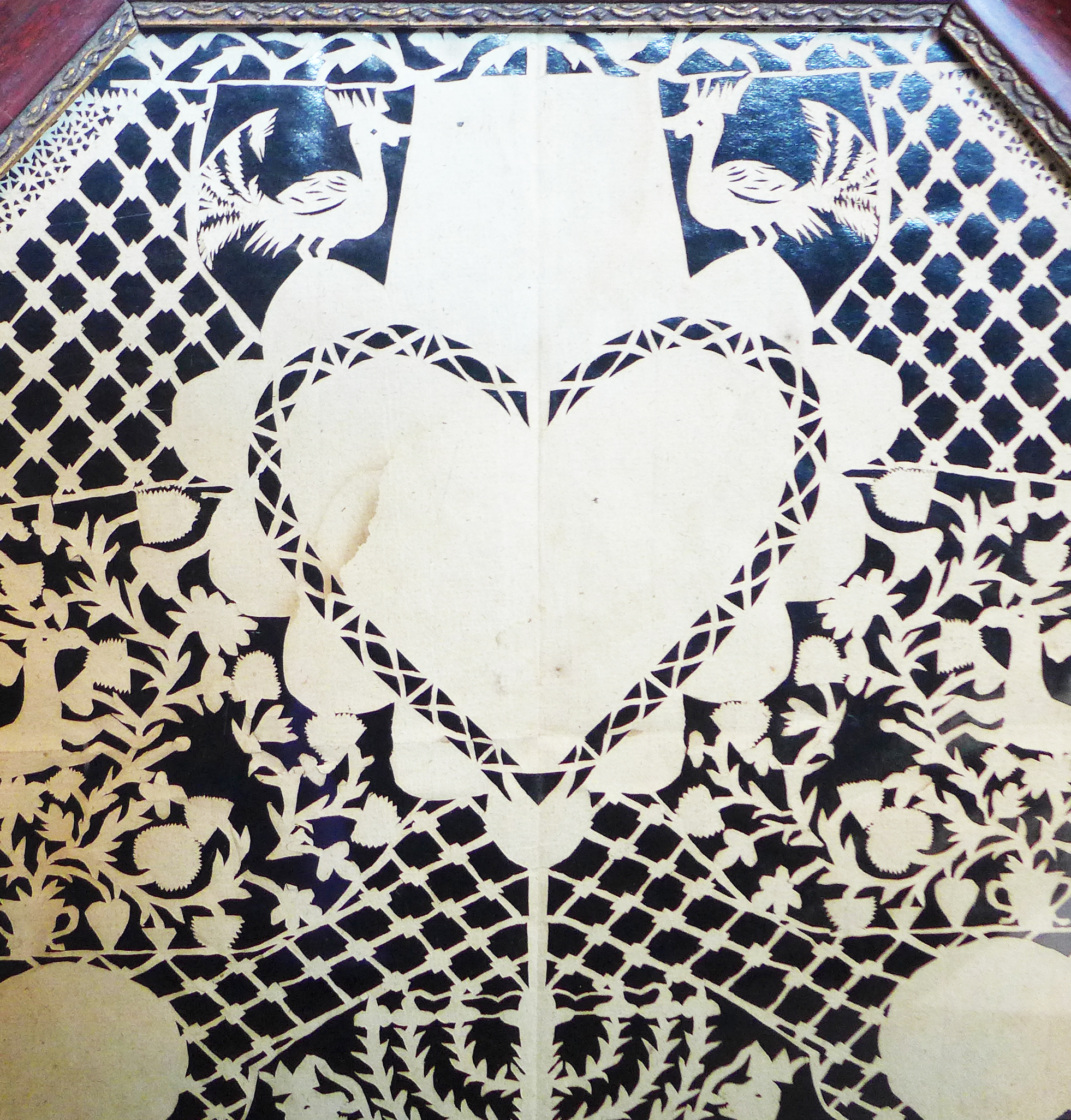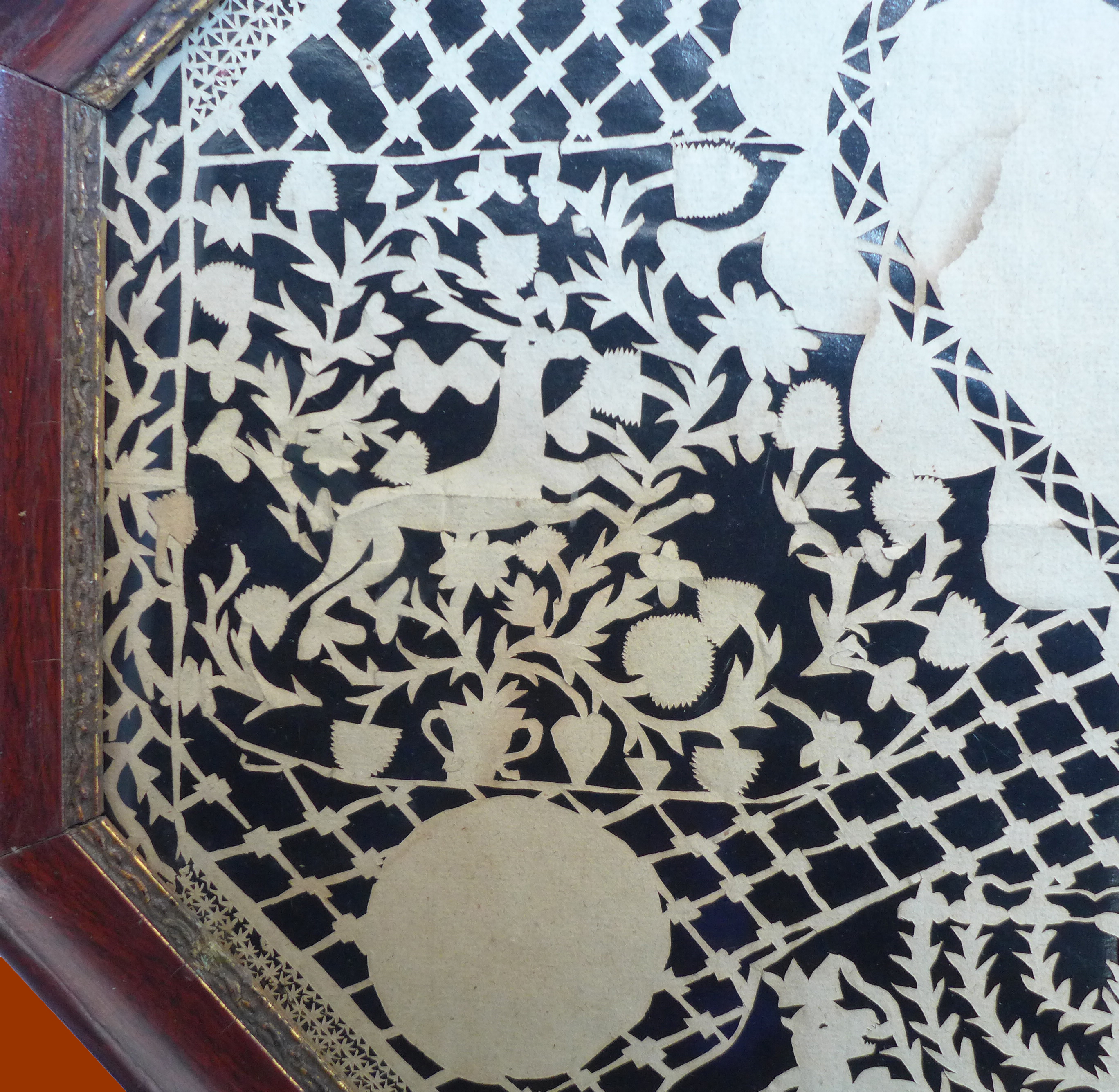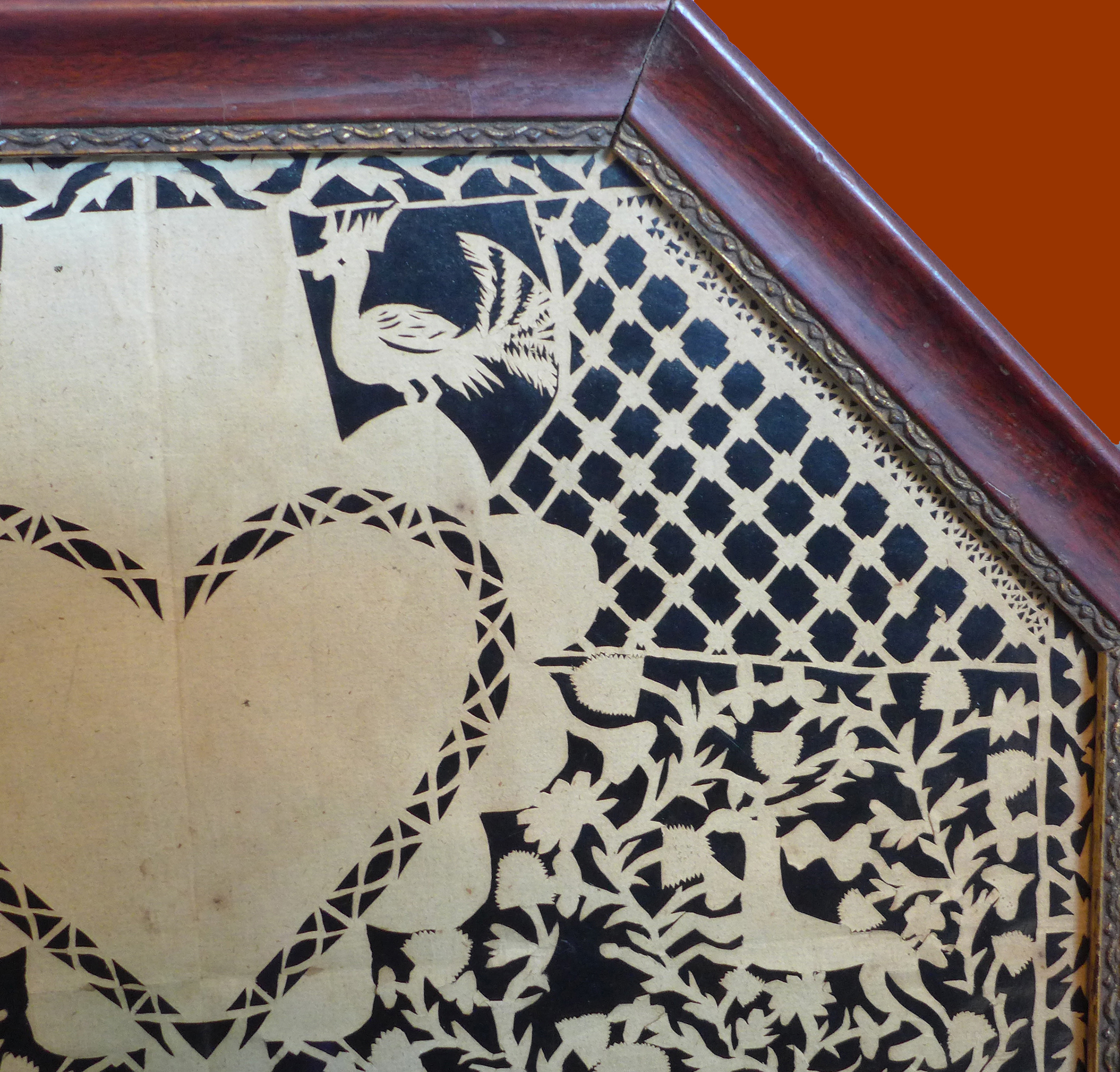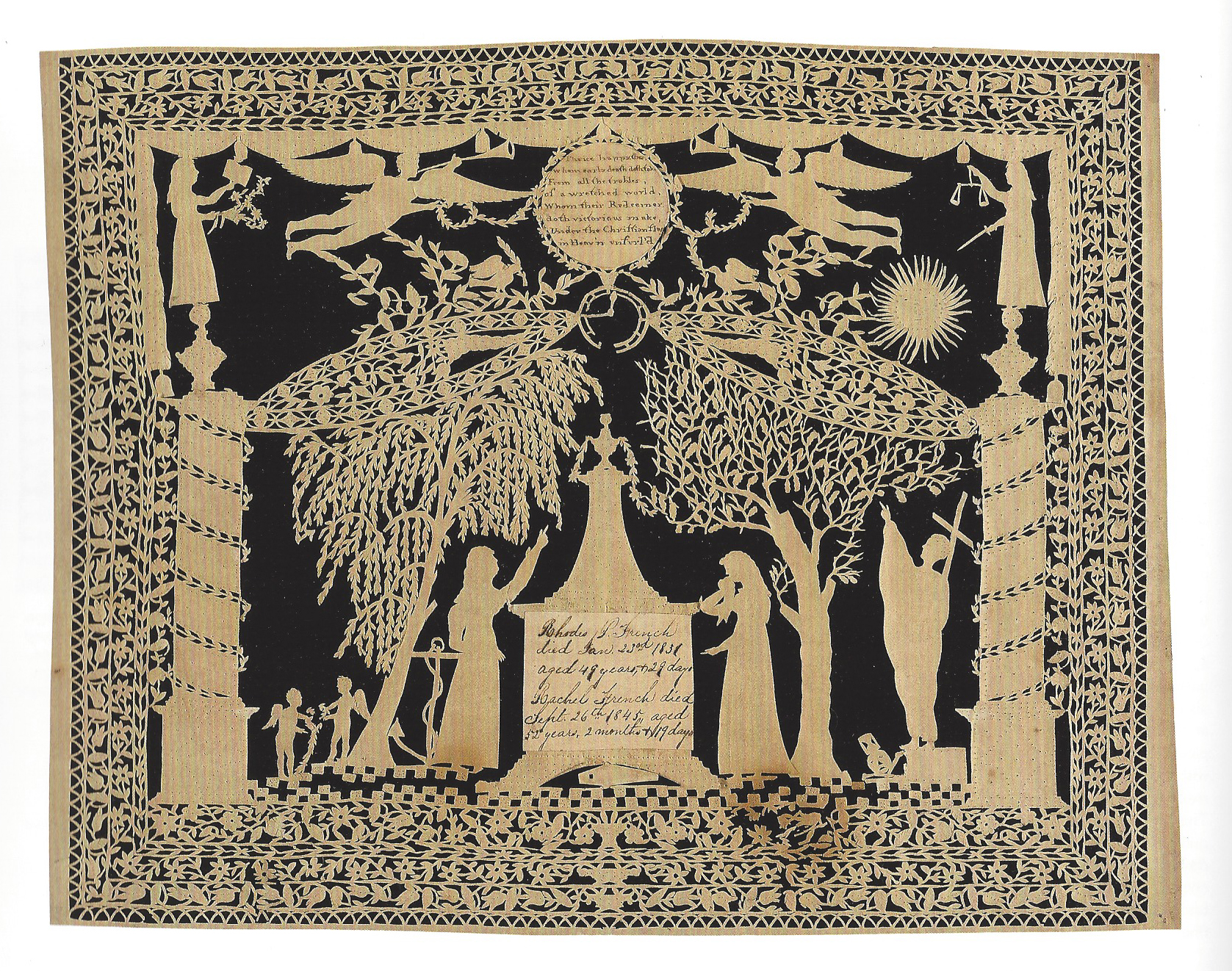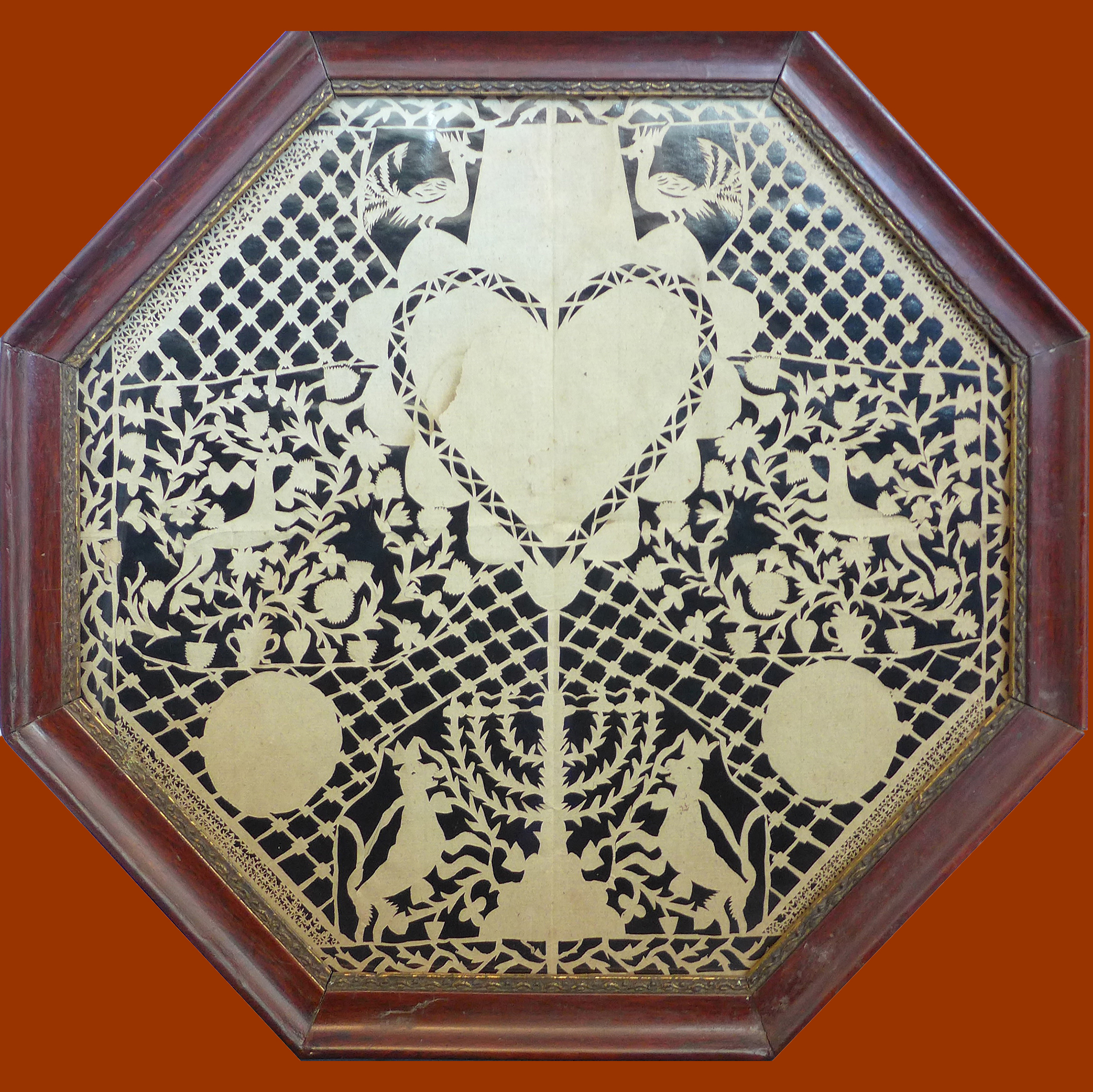
We at McClard Segotta Antiques love Scherenschnitte and are excited to offer this very special scissor-cutting. The paper was folded in half and cut so that each half is a mirror image of the other. This is an American characteristic. The menorah indicates a Jewish link to this cutting. The Scherenschnitte tradition followed the German people who immigrated to Pennsylvania and many of the Jewish people who immigrated to Pennsylvania in the 18th century were from Central Europe, including Germanic countries. Scherenschnitte in America was brought from Germany and Switzerland by immigrants. The Pennsylvania German of Pennsylvania continued the practice here and, although we seldom see Jewish American scissor-cutting, one might expect that the German-speaking Jewish immigrants would either pick up the tradition from the Christian immigrants or have brought the tradition with them.
This early 19th century Scherenschnitte is filled with Jewish symbols. The first motif to catch the eye is the large heart trimmed with lacey cutting. Our eye is immediately drawn down to the menorah flanked by crowned lions. The bit of research we did for this piece shows that the seven-branched menorah symbolized the ideal of universal enlightenment. The seven lamps suggest the branches of human knowledge, represented by the six lamps inclined inwards towards, and symbolically guided by, the light of God represented by the central lamp. The menorah also symbolizes the creation in seven days, with the center light representing the Sabbath. Admittedly, we did not find the meaning of crowned lions, but did find that lions hold special meaning — a lion is the symbol of the tribe of Judah. We found lions holding crowns and lions having crowns held over them as the lions hold the menorah. Lions denote majesty, strength, and courage. Deer is a symbol of the tribe of Naphtali. Deer is also a symbol of beauty, glory, and swiftness. The Hebrew word for deer is Tzvi and it has been used to describe the Holy Land, the Land of Israel, which was sometimes called "Land of the Deer." The birds are a mystery to us. We thought them to be peacocks and found some references to golden peacocks but none that explained their importance.
Moving on to the overall work and appeal of this cutting — it is a masterpiece! It is so complicated with twists and turns, jagged edges and smooth lace-like cuts. On four edges you will see the intricate tiny windows left with tiny little cuts. These intricate borders are very unusual for American Scherenschnitte. I have seen only one other with similar complexity—it is illustrated in For Kith and Kin The Folk Art Collection at the Arti Institute of Chicago by Judith A. Barter & Monica Obniski at page 60. That piece is a mourning piece memorializing two people from New York. The edge design is not the same and likely not by the same hand. The two artists may have been contemporaries who saw the other’s work and mimicked it or one artist the student of the other.
This is one of the best American Scherenschnitte we have offered. It is cut from wove paper and placed atop a glossy blackened paper (we used to call this flint paper). The glossy black paper caused some glare at the top of the photo that we just couldn’t get away from. It is housed a period frame that was almost certainly made for this piece and measures 14 3/4" high x 16 1/4" wide. The frame had some losses to the finish that we had restored. If you look closely at the cutting, you will see some small breaks and stains. The only somewhat noticeable staining is on the heart. The breaks and any losses are so minor that you have to inspect closely to find them. Circa 1820.
#6802 Sold
Reference:
Barter, Judith A. and Obniski, Monica, For Kith and Kin The Folk Art Collection at the Art Institute of Chicago, Yale University Press, 2012 at 60-61.
Please see Scherenschnitte, The Art of Papercutting for more information on this wonderful form of folk art.

